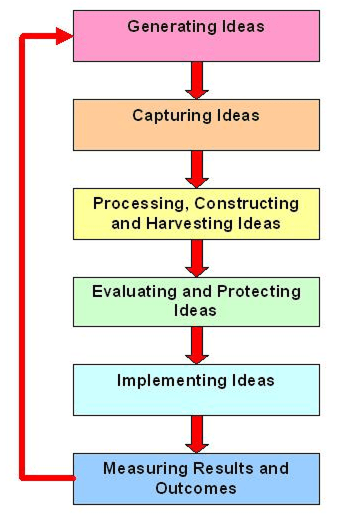Unlocking Innovation in Your HR Team
)
“The future of HR is no HR!â€' You've probably read those alarmist headlines for a good decade or more, but over the past two years they've appeared with ever-greater frequency. A lot of the hype has focused on the impact that automation is having on jobs, and on HR roles in particular.
However, is it just hype or is there something to it? In the rush to ensure employees are prepared for the future of work, is it possible that HR has let itself slip under the tidal wave of change, instead of riding its crest or staying two steps ahead? Like a mechanic who has let his or her own car fall into disrepair, has HR taken its eye off the ball? Does the function even have the skills and mindset to cope with fundamental changes in how we work?
As thought leaders Deloitte have stated[1], HR is at a crossroads: “Once designed primarily as a compliance function, today's HR organisation must be agile, business-integrated, data-driven, and deeply skilled in attracting, retaining, and developing talent.â€'
Deloitte argues that HR requires an extreme makeover driven by the need to deliver greater business impact and drive HR and business innovation. Unfortunately, only 5% of Deloitte's surveyed leaders voted their organisation's HR performance as “excellentâ€', while 46% said their organisation was “adequateâ€' at holding HR accountable for providing innovative solutions and programs (a significant 43% said they were “poorâ€').
What's the key to keeping HR viable in a world that's always in a state of flux? The answer is innovation. In 2019, HR must champion innovation – not just within its own sphere but organisation-wide. Innovation is a mindset enabled by HR and driven through all members of the organisation – and it may just ensure HR remains at the executive table.
Here's what sets true HR innovators apart.
1. They Tap into Creativity
We were all creative once. Children are naturally creative – especially in environments where it's ok to take flights of fancy, to make mistakes (and to make a mess!). Sure, the paintings may look more like random squiggles than Monet, but anyone who has spent time with a 4-year old knows they have an innate ability to think outside the square. When we hit school, something happens to most of us; we lose that creativity, or it gets stamped out of us. This continues into the workplace. Creativity has no place in a high performing work environment, or so we're told.
However, creativity is a key ingredient of innovation. Facebook, to cite one example, accepts this: they have an artist-in-residence program to encourage new ways of thinking. While that might be extreme, there's no doubt that our physical surroundings and the subtle cultural nuances of the workplace make a difference.
Take a look around your office: Does it inspire creativity? Does it facilitate knowledge sharing, cross-team collaborating, and also allow for more subdued creative recharging? Utilising unusual or unique workspaces is one way to unlock creativity – as seen in the office environments of any number of tech start-ups.
How about your organisational culture? Does it encourage employees to put forward their ideas without fear of reprisal or ridicule? Just as critically, do you provide time for creativity? Google's famous “20% timeâ€' encourages workers, in addition to their regular jobs, to spend 20% of their time working on what they think will most benefit Google. “This empowers them to be more creative and innovative,â€' said founders Larry Page and Sergey Brin in their 2004 IPO letter. “Many of our most significant advances have happened in this manner.â€' Indeed, 20% time has allegedly led to the development of Google News and Gmail.
2. They Demonstrate the Right Leadership and Vision
HR leaders play a critical role in fostering innovation, if only by reinforcing the cultural tone through vision, mission and values. With every leadership decision, every policy change, every communication with employees, leaders should be asking if it will contribute to innovation or undermine it. In addition, HR leaders must know how to bring a HR team together and help it evolve into a more business-integrated function. They must also be comfortable adopting and embracing technology and analytics – which brings us to the next “must-haveâ€' on the list…
3. They Have the Right Skills
Without the right skills, the profession won't evolve, and innovation will flounder. A 2018 survey by people analytics and HR thought leader David Green, in conjunction with Ian Bailie at myHRfuture, identified the key skills HR professionals need to develop. The top three included people analytics, change management, and digital HR/HR technology. While “digital HR skillsâ€' is hardly surprising to see, just about all 12 listed capabilities are either driven or impacted by technology.
However, if HR leaders were to choose just one area to upskill during 2019, it must be people analytics. This area has emerged as perhaps the most essential skillset for those looking to improve individual performance, enhance employee experience and achieve business goals. And with so many business goals focused on staying ahead of the competition, innovation is once again called for. Yet research[2]Â shows that nearly 60% of surveyed companies do not have basic data literacy skills in place across the HR function. These foundational skills include knowledge of basic statistical concepts, understanding relevant data sources and formats, and ability to interpret common data visualisations.
4. They Have the Right Tools
Modern technology is not a substitute for human interaction and skillsets; rather, it should supplement and enhance skillsets, and be used to increase productivity. Cloud-based HR technology can streamline HR processes and remove manual tasks, while providing access from anywhere at any time. A 2017 study by McKinsey Global Institute[3] revealed that 56% of typical “hire-to-retireâ€' tasks could be automated with then-current technologies and limited process changes.
Technology can also provide the tools for in-depth data analysis. Data is the key to knowing where to focus, where opportunities lie and how to improve processes. With HR teams notoriously understaffed, anything that helps HR focus on strategic initiatives (such as driving organisation-wide innovation and change management) should be embraced. We've already seen how technology has helped reinvent performance management, create on-demand learning opportunities, and provide self-service functionality for employees. New tech breakthroughs in AI and machine learning will continue to transform how HR delivers its services.
5. They Use an Ideation Process
Having great ideas is one thing; transforming those ideas into successful outcomes or benefits is quite another.
A typical idea management process will involve six steps, all of which can be adopted by an HR team:

From brainstorming, “mindmappingâ€' or any other technique used to generate a large number of ideas, through to the vetting process and mapping out the practical applications of those ideas and measuring results, a formalised idea management process will ensure any HR-generated ideas do not automatically be discarded to the “too hardâ€' bin.
Alternatively, HR is increasingly turning to design thinking to improve service delivery.[4] Design thinking – also called human-centred design – is a problem-solving process focused on solving the needs of a specific group of people, such as customers or employees. It aims to match people's needs with what is technologically feasible and what a viable business strategy can convert into value and market opportunity.
Design thinking has widespread application in just about every HR area: reward & recognition, performance management, learning & development, HR services and career management. Companies as diverse as Cisco, Atlassian and Aurecon have embraced design thinking as a way of improving HR's processes and ultimately enhancing the employee experience.
Becoming an Ideas Powerhouse
Just like any other business department, HR can become a creative ideas generator – and those ideas can benefit HR itself as much as the organisation. HR also doesn't have to be a passive passenger on the change journey – it can be a driver. Rest assured, HR is still needed, perhaps more than ever before. However, like all professions it must evolve and adopt fresh approaches to tackle current and future challenges.
About the Author

Iain Hopkins is a Content Marketer at ELMO Cloud HR & Payroll. ELMO's integrated suite of cloud-based HR, payroll, rostering / time & attendance solutions helps organisations automate HR processes and streamline workflows – leaving HR teams to focus on strategic initiatives. For further information, contact a member of the ELMO team.
Â
[1] “Reinventing HR: An Extreme Makeoverâ€', written by Art Mazor, Brett Walsh, Michael Stephan, 2015
[2]Â The People Analytics Maturity Model, Bersin, Deloitte Consulting LLP/Madhura Chakrabarti, PhD, 2017
[3]Â https://www.mckinsey.com/business-functions/organization/our-insights/the-organization-blog/human-resources-in-the-age-of-automation
[4]Â https://www2.deloitte.com/insights/us/en/focus/human-capital-trends/2016/employee-experience-management-design-thinking.html
.png)
